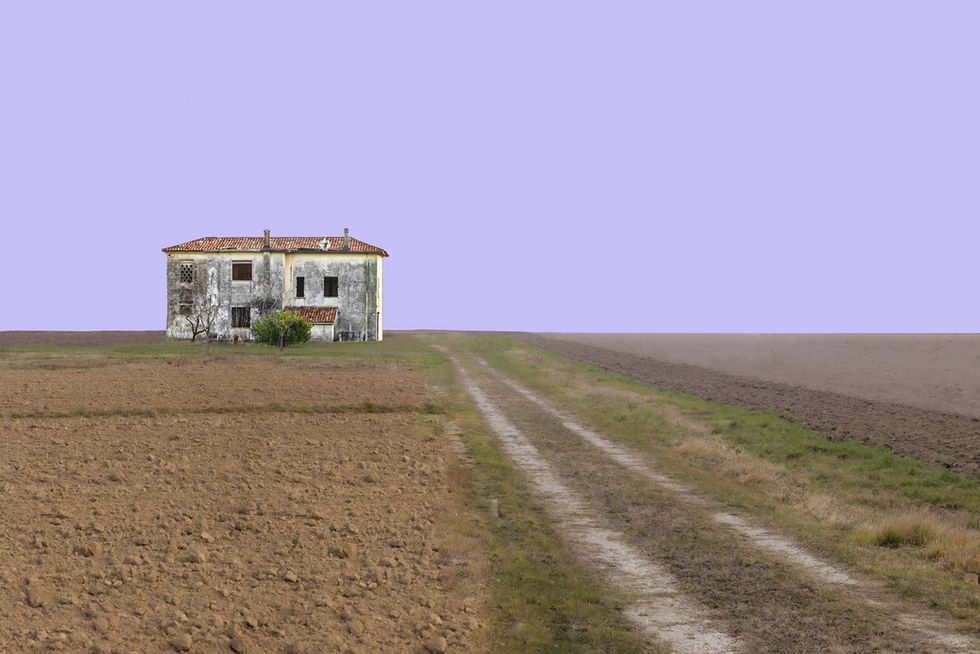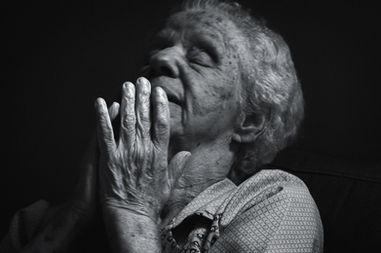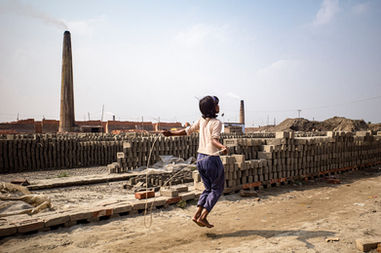
THEY HAVE GONE
Abandoned but not forgotten, the farmhouses of the lower Piave stand as quiet monuments to a vanished rural life. In this beautiful photographic journey, past and present meet in the silence of stone and soil — revealing the poetry of a land shaped by labor, memory, and time.
November 8, 2023
PICTORIAL STORY
photography LORENZO VITALI
story LORENZO VITALI
introduction MELANIE MEGGS
The landscape of Eastern Veneto in Italy holds a special place in the heart of Lorenzo Vitali. It is a place that has long captivated him, evoking strong emotions and a deep sense of connection. In particular, the lower Piave region stands out for its unique architecture, characterized by the presence of farmhouses that are an integral part of the landscape.
For an attentive observer, these farmhouses cannot go unnoticed as they stand out along the provincial roads or hidden within the secondary road network. And for Lorenzo, it was this very landscape that he felt compelled to explore, to understand its emotional affective relationship and document it through his photography.
But this journey was not one that Lorenzo took lightly. He spent a significant amount of time researching and studying maps, carefully planning his approach before venturing into the field. Armed with the right perspective, lighting conditions, and photographic equipment, Lorenzo was ready to capture the essence of Eastern Veneto.
However, it was not just about capturing the physical aspects of the landscape and its architecture. Equally important was delving into the historical and geographical context of this region. Through in-depth analysis, Lorenzo was able to gain a deeper understanding of the topic at hand.
But what was the ultimate purpose of this journey? Was it simply to create a documentary of the landscape and its buildings? No, for Lorenzo, it was about capturing the emotional cues that had drawn him to this place and using his photography to convey that sentiment to others.
We join Lorenzo on his journey through Eastern Veneto, exploring the landscape, history, and architecture that have left a lasting impression on him. Prepare to be captivated by the emotional power of this region and its unique charm.
-min.jpg)
THE HISTORICAL GEOGRAPHICAL CONTEXT
The progressive reclamation of these territories, implemented gradually with greater intensity and effectiveness in the last twenty years of the 19th century and then in the first half of the 20th century, created the possibility of considerably expanding the areas destined for agriculture.
The Reclamation Consortiums that have arisen here, as happened in other areas of the Veneto and Italy, are clear evidence of this.
The farmhouse, which spread as a constructive model in these areas mainly between 1880 and 1935, had the function of providing a house adjacent to the workplace for the laborers who worked the land with sharecropping contracts. These structures generally arose quite isolated in each of the numerous landholdings. However, already towards the end of the 1950s, the industrialization process, the tourist development towards the sea and the mechanization of agricultural processes progressively reduced the number of laborers needed for agricultural activities. In 1964, sharecropping was definitively abolished in Italy. The 1966 flood also demonstrated that the river was not yet fully under control.
All this determined, in a rather rapid time, profound changes at a social and working level with a strong push towards the urbanization of an important part of the population.
Therefore, these large structures were, one could say overnight, abandoned and now remain only as important evidence of a precise historical phase: their demolition would have a high cost and unfortunately therefore their fate, in the absence of, at the moment no conservative interventions are foreseen, it seems to be the slow degradation.
I thank Dr. Piergiorgio Rossetto, a profound connoisseur of these territories and their anthropological characteristics, for the precious advice that he has generously placed at my disposal.
THEY HAVE GONE
The gaze of a traveler, who would like to immerse himself in the evocative atmosphere of the lower Piave, would be captured after a few kilometers by the discreet presence, in the landscape, of unusual imposing buildings integrated with unexpected material naturalness in the countryside.
These are the so-called farmhouses. This ends up creating in his mind, as he progresses through these places, day after day, a sort of sensation of an awaited appointment.
I lived this experience in an emotionally intense way, which went beyond documentary intent.
What I have tried to tell, “illustrating” and therefore inserting a strong interpretative component, is a story, one of the many stories hidden in these border areas between land and water. As an astonished and curious observer, as I felt throughout this slow journey of discovery, I have tried to give new life to this apparently “forgotten” landscape, sometimes also using my imagination, but more often trying to grasp its coy poetry, which I wanted to try to bring out. Past lives can be guessed inside and around these monuments of a peasant reality, now extinct. Stone dinosaurs mark the territory, almost a warning not to forget those who have rejoiced, suffered and worked hard and industriously here.
I therefore created images that could be defined as lively, in which however the patina of time maintains its discreet, unmistakable presence.

As our exploration of Eastern Veneto with Lorenzo Vitali draws to a close, we are left with a profound appreciation for the landscape, history, and architecture that make this region so unique. Through his photography, Lorenzo has captured not just the physical aspects of the landscape, but also the emotional impact it has on him. We are reminded of the ever-changing nature of this region, but in Lorenzo's photographs, these structures appear as more than just monuments of the past; they are monuments of a way of life that once thrived here. As we bid farewell to this journey, let us not forget the stories and the people that have shaped this landscape and left a lasting impression on Lorenzo and all those who have had the privilege of experiencing it.
They Have Gone will be exhibited from 13 October to 26 November 2023 at the Colorno Festival in Parma, Italy, in the premises of the Aranciaia of the Palace. The photos are in large format. The exhibition was curated by Paola Riccardi.

Read about Lorenzo's other projects -
"Sahara: The Shape and the Shadow" >>>
"An Arrythmic Succession of Interrupted Pauses" >>>
The views, thoughts, and opinions expressed in the text belong solely to the author/s, and are not necessarily shared by The Pictorial List and the team.









































